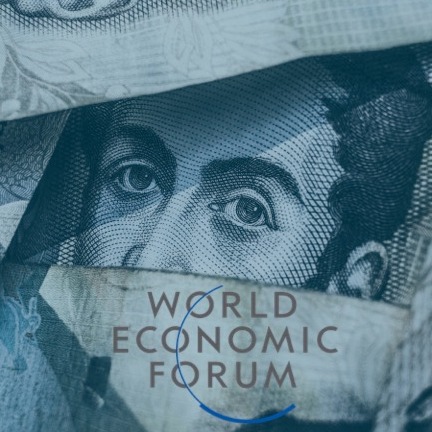Investing responsibly can unlock trillions of dollars: here's how
Rodrigo Tavares, Will Martindale, Brian Tomlinson

Capital markets manage an estimated $71 trillion, approximately the size of the combined GDP of all countries in the world ($78 trillion in nominal terms, 2015).
Fiduciary duty is the golden rule against which much of this capital is deployed.
It is a fairly straightforward principle: asset managers (fiduciary agents or trustees), have the legal obligation to act in the best interests of asset owners (principals) or beneficiaries (in the case of pension funds).
The essentials of fiduciary duty, as defined in statute, regulation and case law around the world, can be found in the primary duties of prudence and loyalty, and the duties of good faith, impartiality, and monitoring.
Fiduciary obligation establishes a relationship of “trust and confidence” and rigorous standards of conduct. It is the money managers equivalent of the Hippocratic Oath.
Rapid change
Some institutional investors have interpreted their fiduciary duties narrowly.
Investment decisions have often been derived only from traditional financial indicators to gain insight on an asset’s current and future performance.
Some investors argued that this was sufficient to meet their fiduciary duties.
This was based on the belief that managing capital in a way that also considered environmental, social and governance issues (ESG), could compromise returns, and therefore was not in alignment with fiduciary duties.
This is rapidly changing for three reasons:
1. The value of ESG and the modern understanding of fiduciary duty
ESG factors represent risks and opportunities that may have financial effects on a financial asset’s performance, but may not be reflected in traditional financial data.
ESG practices can help make a company less vulnerable to reputational, political and regulatory risks, leading to lower volatility of cash flows and stock performance.
As a result, a lack of integration of ESG factors into investment processes may cause the miss-pricing of risk, and poor asset allocation decisions.
For institutional investors, ESG principles can help deliver their core mission: superior, risk-adjusted performance over the long term.
ESG is quickly moving from the margins to the mainstream.
The proportion of institutional investors who see fiduciary duty as precluding consideration of ESG factors is shrinking fast (down to only 8% of European investors in a recent survey – though still 22% in the US).
This reflects that the interpretation of fiduciary duties is subject to change over time, and responding to social norms and market expectations.
As a result, institutional investors must adapt to fulfil their duties.
A 2015 report published by the Principles for Responsible Investment (PRI) and the United Nations Environment Program Finance Initiative (UNEP FI), concluded that failing to consider long-term investment value drivers, including ESG issues, in investment practice is a failure of fiduciary duty.
A stream of studies demonstrates improved financial, portfolio and stock performance where ESG factors are analytically applied, such as the ones published by Harvard Business School, Cambridge Associates and the Global Impact Investing Network.
A study published by the Journal of Sustainable Finance and Investing demonstrated that listed companies with good ESG practices show lower stock return volatility in comparison to the reference companies – on average by 28.6% less. And the positive effect on equity return is 6.1% higher for companies with good ESG practices, on average.
The value of ESG to investors makes it a fundamental component of financial analysis and of fiduciary duty.
Governments are also responding and are reflecting the modern interpretation of fiduciary duty in regulation.
In the United Kingdom, guidance from The Pensions Regulator indicates that “trustees of UK pension funds should consider ESG factors when making investment decisions, where such factors are financially significant”.
In Canada, many pension schemes are required to account for ESG factors in regulatory reports.
In Japan, regulators have identified sustainable value creation as a core objective of the investment chain.
The fiduciary duty project, led by The Generation Foundation, the Principles for Responsible Investment (PRI) and the United Nations Environment Programme – Finance Initiative (UNEP FI), identifies further measures in regulation and investment practice in major capital markets, such as the United States, Braziland Japan, to enable the uptake of ESG integration by institutional investors.
Advancing ESG is often less about new regulation, than it is about better regulation.
2. The long term
There is a growing consensus in the wake of the 2008 financial crisis that “seeking immediate high returns without accounting for long-term implications may lead to underperformance for long-term investors, and, by extension, underperformance for the economy as a whole,” as pointed out by a Harvard Kennedy School brief.
A quick look at the investment policies of major institutional investors also indicates that long-term investing is the preferred route - the California Public Employees’ Retirement System (CalPERS) calls it “a responsibility and an advantage.”
Long-term investing requires an analysis of ESG factors, at the company portfolio and system levels.
Impacts of ESG factors, such as human capital management or climate change, are felt over the short, medium, long and very long term. They are essential to sustainable value creation.
3. Machine learning
Despite the importance attached to long-term value creation, investors are also increasingly using big data, AI and machine learning to inform asset allocation and investment decision-making.
An area of interest for responsible investment, is the quantification of ESG data. AI and machine learning are not a novelty in asset management. Robot-advising, algorithmic trading, or high-frequency trading, for instance, are used recurrently by financial institutions seeking to optimize financial decisions.
The application of machine learning and big data to ESG, when complemented by engaged stewardship with investee companies and better standardized disclosure of ESG data, can enable ESG data to be assessed in an efficient, standardized, and objective fashion.
Institutional investors are already adopting new quantitative ways to account for ESG in investment approaches, such as smart beta and ESG-tilt stock indices.
Funds are beginning to incorporate machine learning into ESG analysis.
For instance, the Compass Fund was just launched by Richmond Global, a NYC-based asset manager.
It will impute ESG data for currently unmeasured companies by detecting patterns within the full set of ESG metrics, and utilize available high-quality ESG data, together with asset managers’ specific, material financial data, to augment and optimize investment decision-making by identifying materially relevant metrics and predicting future financial performance.
Machine learning and big data are also about to be used to measure impact.
Clarity, a NYC and Madrid-based company, will soon launch an automated tool for asset managers that choose to optimize their portfolios by measuring the impact on society of listed companies.
Through machine learning algorithms, it estimates the needs of the population and how companies are actually covering those needs in relation to the capital used.
Moving Ahead
Challenges remain.
Some investors lack clarity on how ESG considerations are incorporated into decision-making, and corporate disclosure of ESG factors is often patchy and hard to compare.
But the investment industry is changing rapidly as huge volumes of capital begin to be deployed with reference to ESG factors.
The next key step is for policy makers and regulators to establish international agreement on the duties that fiduciaries owe to their beneficiaries and include ESG as part of the equation – as requested in the International Statement on Fiduciary Duty issued by PRI, UNEP FI and The Generation Foundation.
By removing the longest standing barrier to responsible investment, we will unlock trillions of investment dollars to positively contribute to long-term sustainable value creation and resilience of our capital markets.
Published in the World Economic Forum Agenda.



